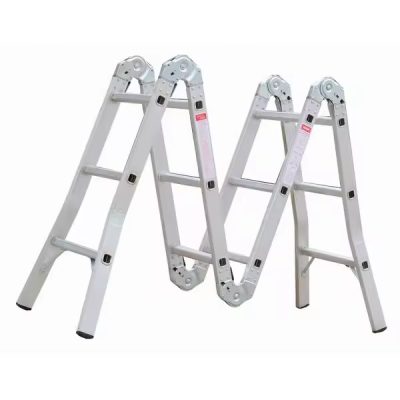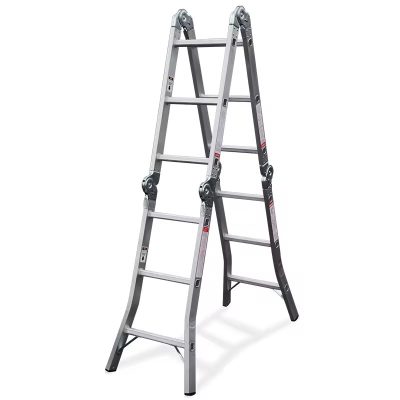Aircraft, the marvels of modern engineering, require meticulous care and maintenance to ensure their continued safety and airworthiness. Amidst the vast hangars and bustling runways of aviation facilities, aluminum ladders stand as essential tools for aircraft maintenance technicians, providing safe and reliable access to elevated areas for inspection, repair, and servicing tasks. In this exploration, we delve into the indispensable role of aluminum ladders in aircraft maintenance, highlighting their contributions to enhancing safety, efficiency, and the overall reliability of air travel.
Ascending to Aircraft Excellence:
Aircraft maintenance encompasses a wide range of tasks, from routine inspections to complex repairs and component replacements. Aluminum ladders serve as vital tools for maintenance technicians, enabling them to access elevated areas of aircraft such as wings, fuselage, and engine compartments. Whether it’s conducting pre-flight checks, inspecting hydraulic systems, or servicing avionics equipment, these ladders provide stable and secure platforms to work from, ensuring that aircraft remain in optimal condition for safe operation.
Safety Above All Else:
Safety is paramount in aircraft maintenance, where technicians operate in close proximity to sensitive equipment and high-powered machinery. Aluminum ladders prioritize safety through robust design features such as non-slip rungs, sturdy handrails, and secure locking mechanisms. Additionally, adherence to strict safety protocols and regulations ensures that ladders are inspected regularly and maintained in optimal condition, mitigating risks and safeguarding the well-being of maintenance technicians and the integrity of the aircraft.
Adaptability to Aircraft Configurations:
Aircraft come in various sizes and configurations, each with its unique maintenance requirements. Aluminum ladders excel in adapting to these diverse environments, offering a range of configurations—from step and extension ladders to platform and rolling ladders—that cater to different aircraft types and maintenance tasks. Lightweight construction and collapsible designs enable ladders to be transported and positioned easily, ensuring that maintenance technicians can access even the most challenging areas of aircraft with precision and ease.
Durability for Critical Operations:
Aircraft maintenance is a mission-critical endeavor, requiring equipment that can withstand the rigors of frequent use and exposure to harsh environmental conditions. Aluminum ladders are prized for their durability and resilience, thanks to their construction from high-grade aluminum alloys known for their strength and corrosion resistance. These ladders withstand the demands of regular use in aviation facilities, retaining their structural integrity and performance over extended periods, thereby contributing to the safety and reliability of aircraft operations.
Enhancing Aviation Safety:
By providing safe and reliable access to elevated areas of aircraft, aluminum ladders contribute to enhancing aviation safety and ensuring the airworthiness of aircraft. Maintenance technicians can perform tasks more efficiently and effectively when equipped with the right tools, ensuring that aircraft undergo thorough inspections and necessary maintenance to prevent issues and ensure safe flights. Moreover, the ergonomic design and user-friendly features of aluminum ladders optimize technician comfort and productivity, further enhancing overall operational efficiency and safety in aviation maintenance.
Conclusion:
In the dynamic and safety-critical realm of aircraft maintenance, aluminum ladders emerge as indispensable tools for ensuring the reliability and airworthiness of aircraft. By enabling safe and efficient access to elevated areas, these versatile ladders empower maintenance technicians to execute tasks with precision and confidence, contributing to the safety and integrity of air travel. As aviation technology continues to advance and air fleets expand, aluminum ladders will remain essential assets, ensuring that maintenance operations are conducted with the utmost safety and efficiency to uphold the standards of excellence in aviation maintenance.







